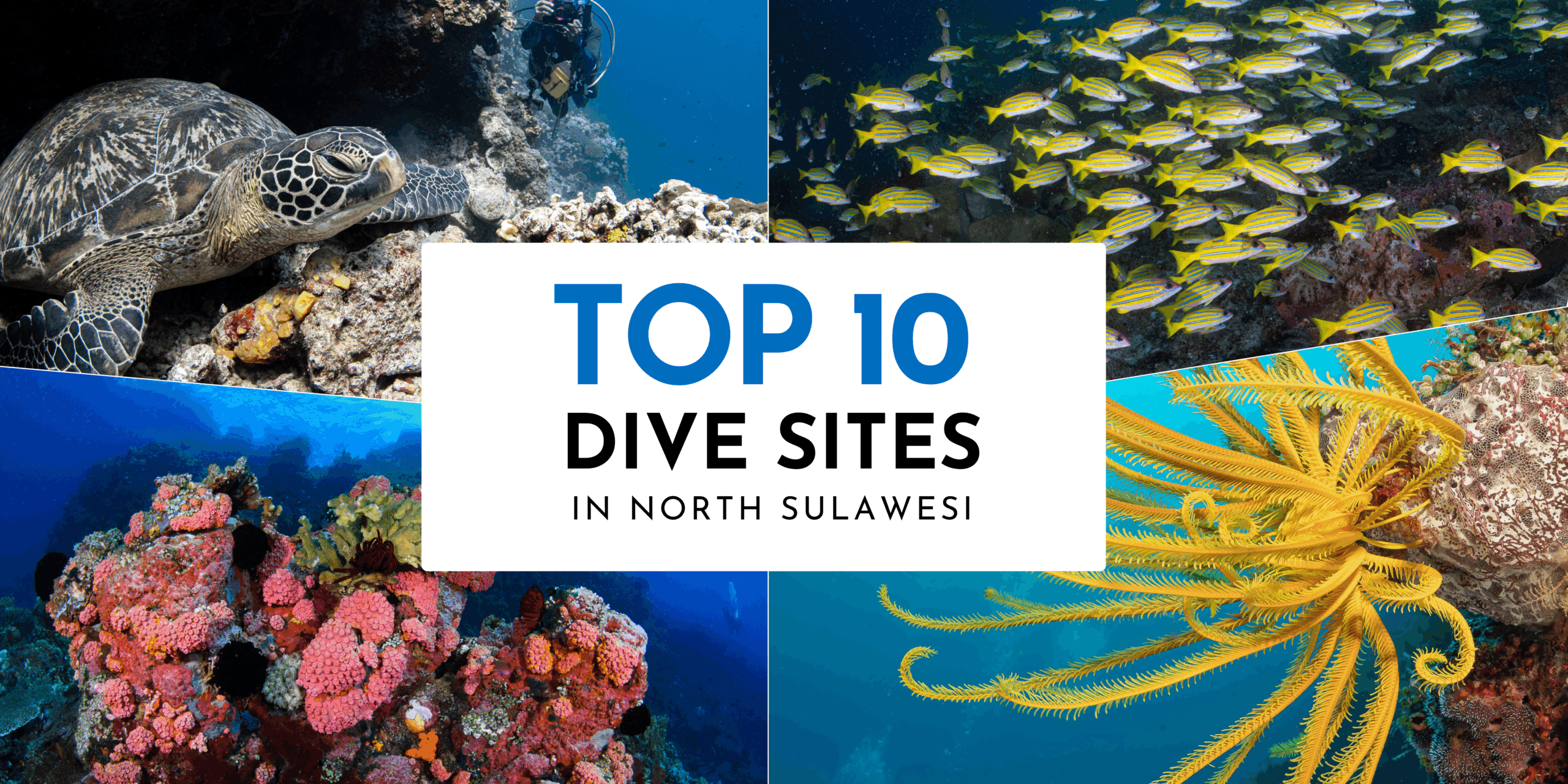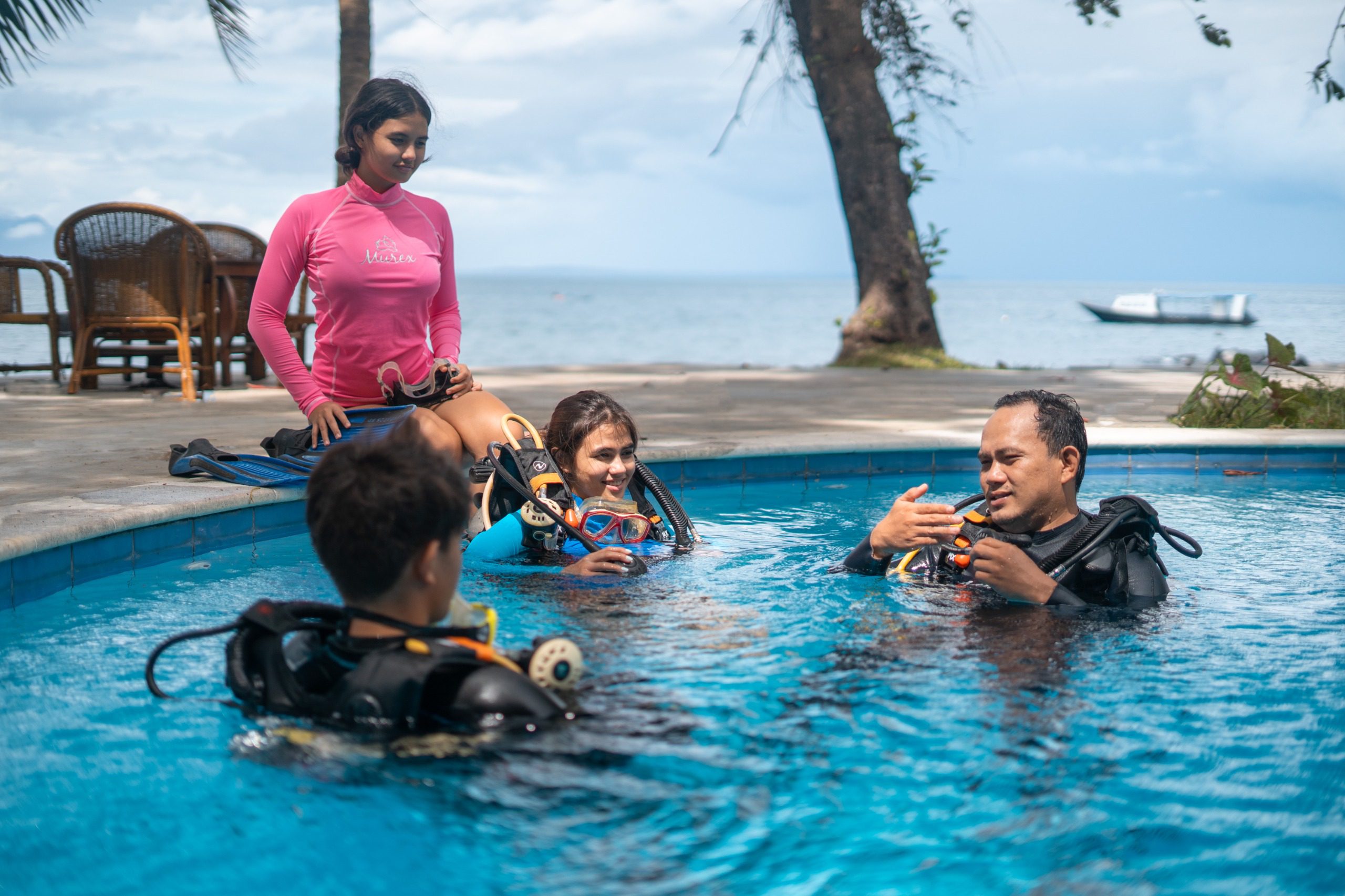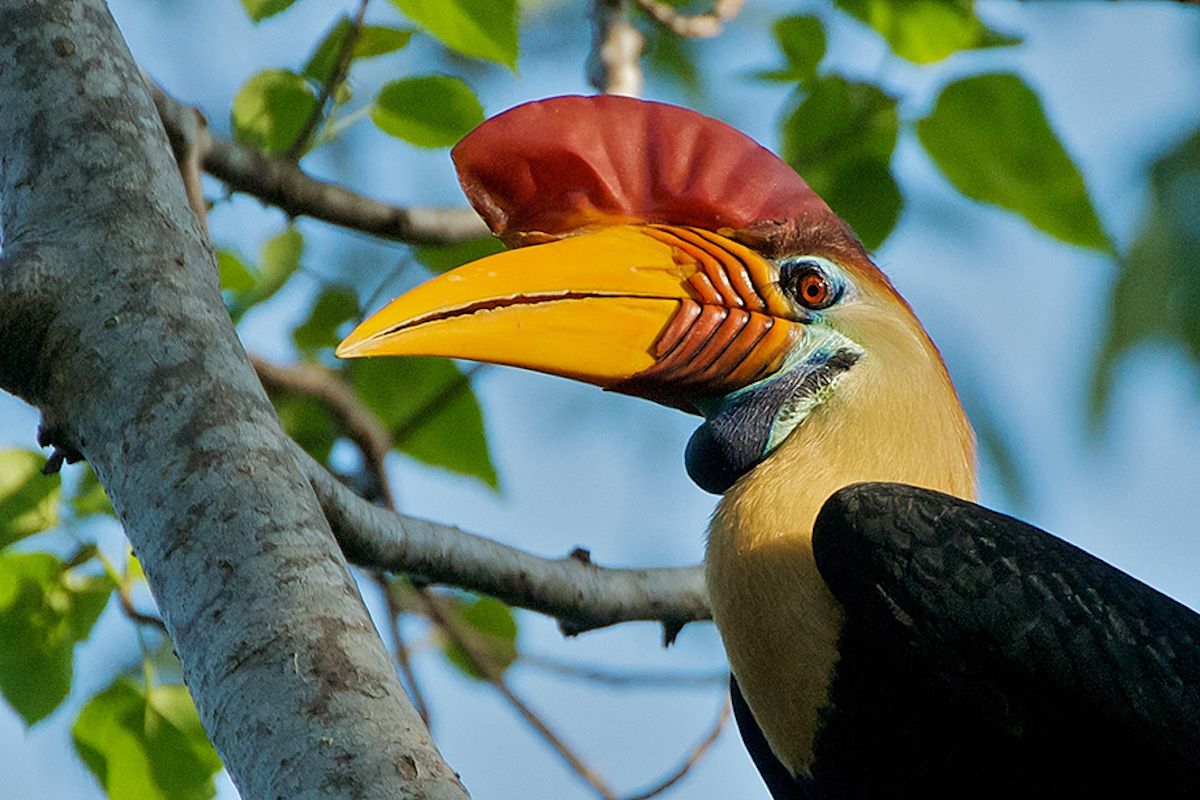
Get to Know The Endemic Species in North Sulawesi Indonesia
Our Indonesian island of Sulawesi is famous with biologists and zoologists around the world for its unique plants and endemic species. Wildlife, in our region in general, tends to fall into one of two origins – Australasian or European. However, Sulawesi is one of the only places on the planet that has wildlife species that demonstrate traits from both origins!
The Malay Archipelago and Alfred Russel Wallace
The duality of species origins was first noted by Alfred Russel Wallace and is referenced in his famous book, The Malay Archipelago. The islands of Sulawesi, formerly known as Wallacea (after the great explorer) are among the most species rich on Earth. To demonstrate this duality, Sulawesi is the only island in south-east Asia with marsupials (the bear cuscus and dwarf cuscus), a typical Australian characteristic (think kangaroos and koala bears).
In addition, Sulawesi is home to the smallest primate in the world, the tarsier, which is also the mascot of North Sulawesi. You can find miniature buffaloes or anoa and there are wild pigs, known as babirusas, that have wrinkled skin and upper tusks that grow up and backwards toward the skull. In this Blog, we will take a look at these endemic species and some of the other unique species that can be found right here in North Sulawesi.
Celebes (or Sulawesi) Crested Macaque
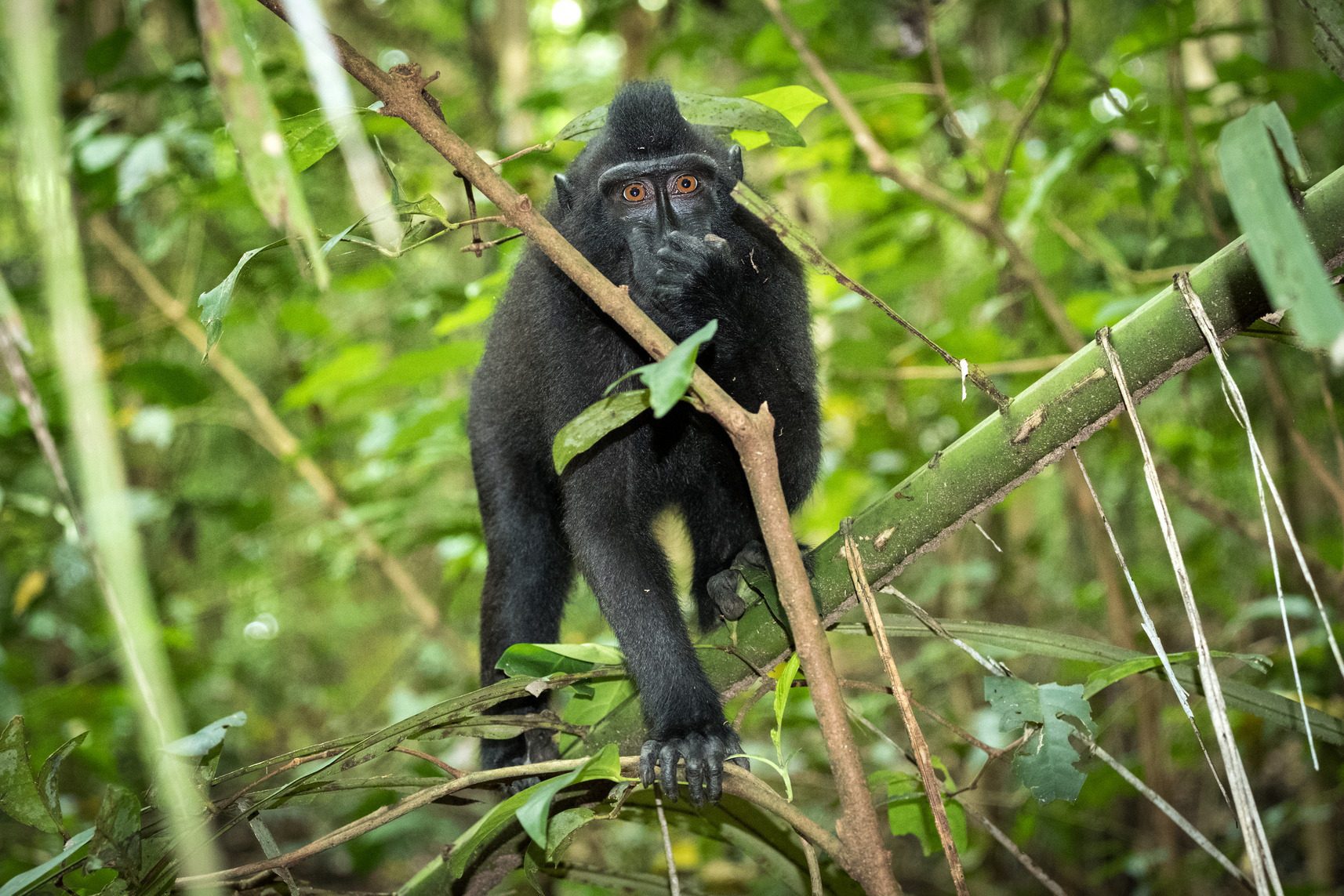
The Celebes crested macaque (Macaca nigra), also known as the crested black macaque, Sulawesi crested macaque, or the black ape, is an Old World monkey that lives in the nearby Tangkoko Nature Reserve. The reserve is an area of protected natural rainforest where many of Sulawesi’s most iconic wildlife species can be found roaming freely.
This relatively small species of primate lives in groups (known as troops) that roam through the forest together – hunting, feeding and playing!
The number of Sulawesi crested black macaques has taken a hit over the years and they are now listed under CITES Appendix II, which categorizes them as Critically Endangered. The decline in numbers has been contributed to by many factors – a decrease in available habitat due to deforestation, illegal capture for the pet trade and they have also been traditionally caught for bushmeat – although this is a practice which is now illegal and is becoming increasingly frowned upon.
Sulawesi Bear Cuscus
The Sulawesi bear cuscus, also referred to as the Sulawesi bear phalanger (Ailurops ursinus), is a tree-dwelling marsupial. This species can also be found in Tangkoko Nature Reserve and recently we have been spotting them in the trees around Murex Bangka Resort too!
They are not an active species and they spend 63% of their time resting! They are usually spotted in the tree canopy, where they sleep on branches which they wrap their long tails around and grip with their sharp claws. Like all marsupials, they carry their young in their pouch, until they are of a size where they can fend for themselves. Usually they are spotted in pairs – so if you see one, look out for the other!
This species is also declining in numbers due to a loss of suitable habitat caused by deforestation and mining, and they have also been hunted for their skins and for the illegal pet trade.
Spectral Tarsier
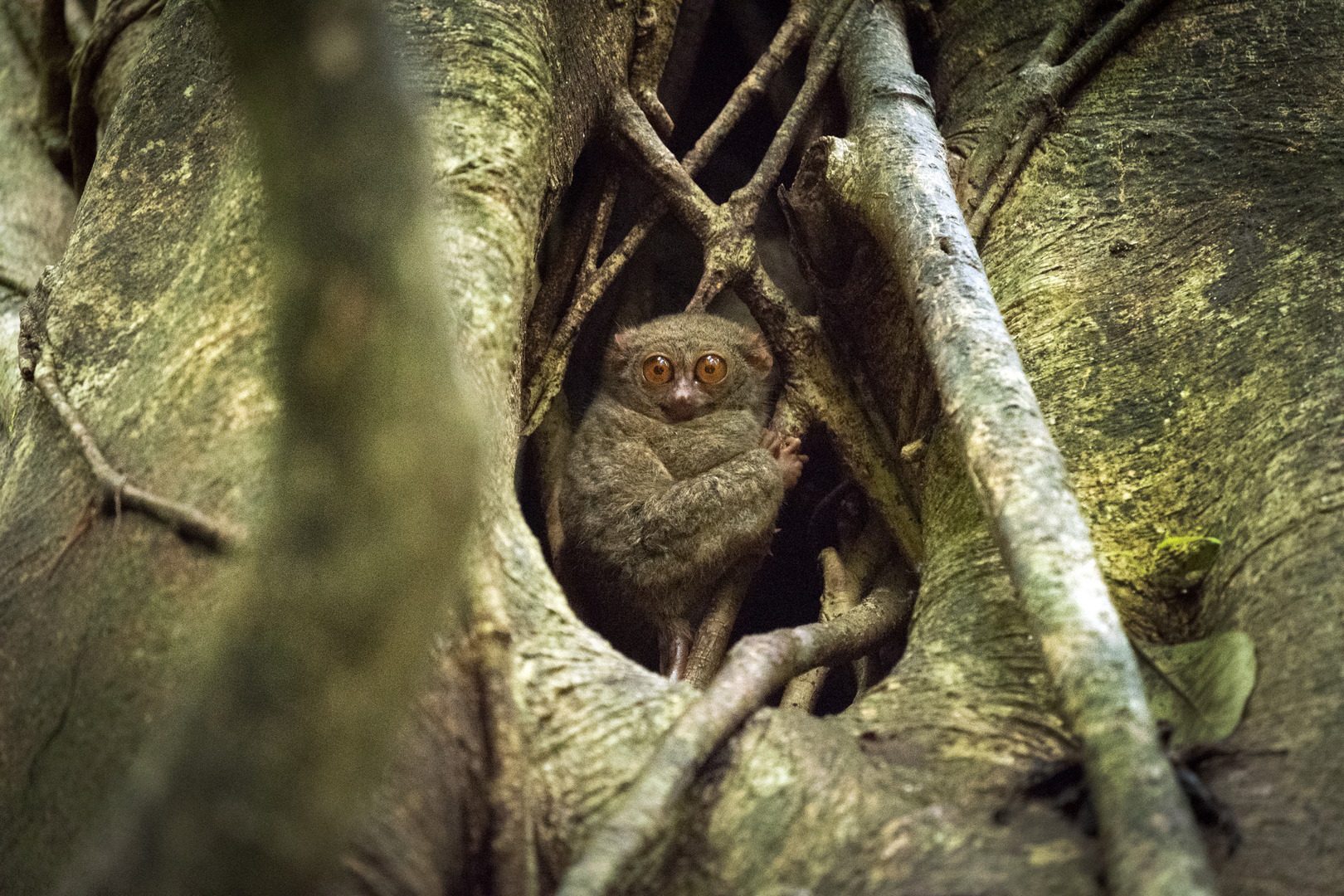
The spectral tarsier (Tarsius spectrum) is the smallest of all known primates on the planet. The tiny tarsier has a head-body length of only 9.5 – 14 cm and a tail of 20 – 26 cm.
Tarsiers are anything but ‘in proportion’, their hands are thought to be the longest of any living primate in relation to their body size. They also have the biggest eyes of any mammal relevant to body weight and size. Their eyes are actually bigger than their brains and are so big that they are actually immobile – neatly compensated for by their ability to rotate their heads 180 degrees! Despite their small size they can jump 40 times the length of their body! This ability serves them well when they are hunting in the tree canopy for insects to feed on.
Tarsiers make a singing sound when they are communicating with each other and we often hear them calling around sunset at both Murex Manado and Murex Bangka.
Anoa
Anoa are a type of dwarf water buffalo and there are two species found here in North Sulawesi – the lowland anoa (Bubalus depressicornis) and the mountain anoa (Bubalus quarlesi). They are both found in areas of rainforest and have been classified as endangered by the IUCN since the 1960s. It is thought that there could be as little as 2,500 of each species remaining in the wild.
Like many species, threats to their ongoing existence include habitat loss and hunting for their skins, horns and meat.
Babirusa

Babirusa are one of the most unique species found here in North Sulawesi. There are three different species of babirusa and they are all critically endangered. Known as the ‘deer-pigs’ (‘Babi’ meaning pig and ‘rusa’ meaning deer) the males have an arrangement of four tusks, two of which stick through their snout and grow backwards towards the animal’s skull.
Babirusa are a protected species and we hope that their numbers will once again increase!
Maleo Birds
The Maleo bird, also known as the volcano bird or the Maleo Senkawor is another species endemic to Sulawesi. They are an ancient species of bird that grow to around twice the size of a chicken. They lay only one egg at a time (which is approximately 5 times the size of a chicken egg!) in pits that can be a meter deep.
They are an oddly beautiful species with striking pink breasts, blue crowns along with orange and green rimmed eyes. Although maleo birds can fly, it is a rare sight as they prefer to stay on the ground. They have long slender legs and necks on disproportionately large bodies.
They are listed as Endangered by the IUCN and it is thought that there may be only around 14,000 individuals in existence today. This is contributed to by them laying only single eggs, as well as external factors including habitat destruction, egg collection and general human interference.
Visit Us in North Sulawesi
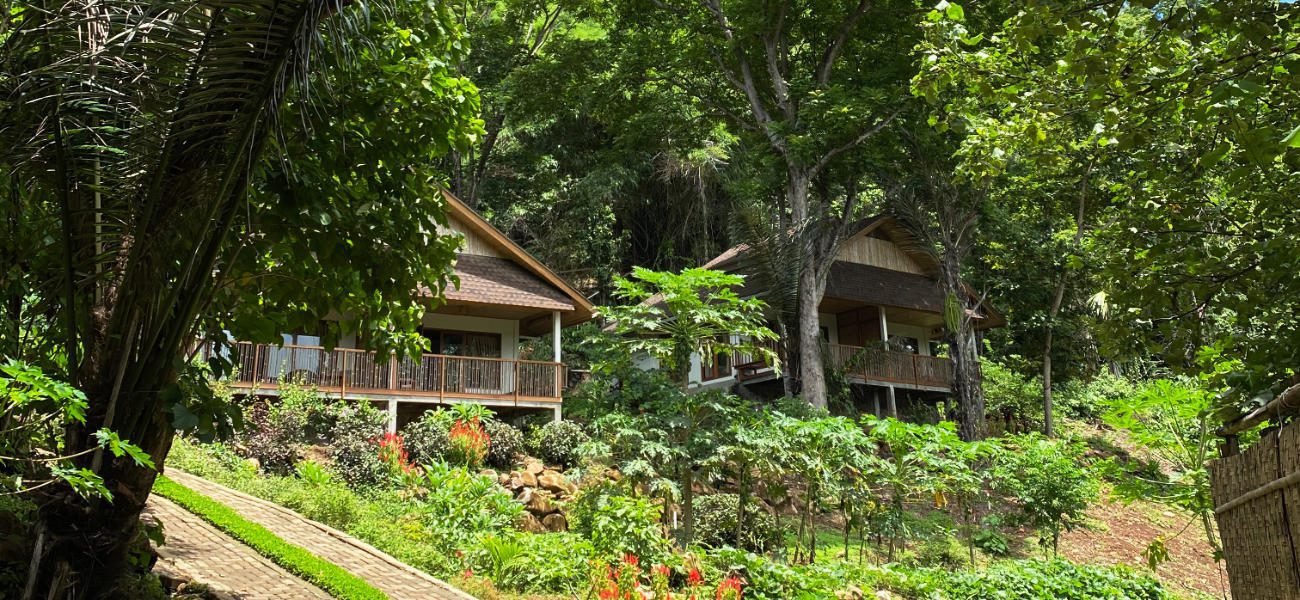
Eager to witness the remarkable endemic wildlife and birdlife of North Sulawesi? Murex Resorts offers a variety of tours, and we can customize excursions to match your interests.
Our guided Tangkoko Nature Reserve tour, led by experienced park rangers, ensures encounters with unique creatures, endemic species, and vibrant birds. To reserve your stay and Sulawesi nature tours, connect with our reservations team today at: reservations@murexresorts.com.
Ready to explore the beauty of North Sulawesi? Secure your spot now! Learn about Murex rates and our Passport to Paradise package! Ensure an unforgettable nature experience by reserving your place today!
Further Reading
If you enjoyed reading this article, you may also be interested in:
What Is The Difference Between A Dugong And A Manatee?
3 Differences Between Hard And Soft Corals
The 5 Top Spots To Dive In Bangka


